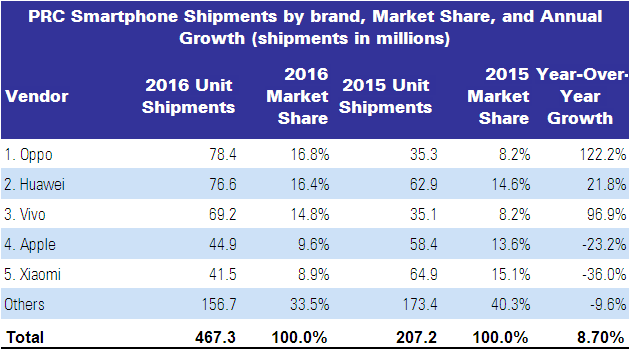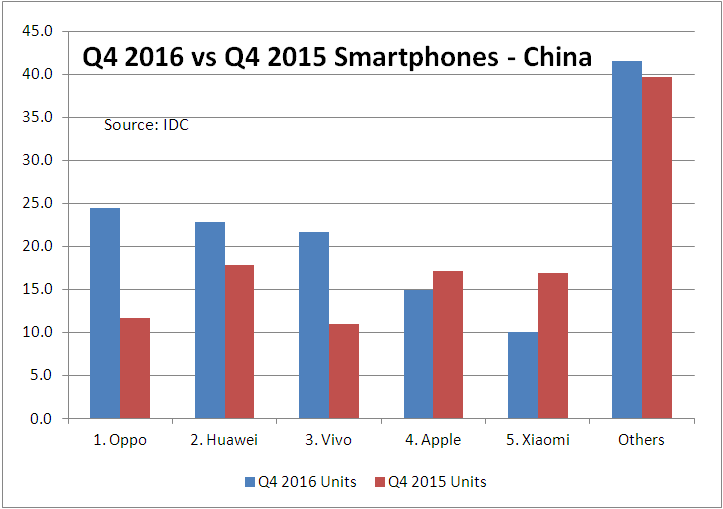The latest IDC Quarterly Mobile Phone Tracker has been published and shows that the Chinese smartphone market grew by 19% in 2016 when compared with 2015. In addition, the last quarter of 2016 saw growth of 17% compared to the previous quarter. Overall, the market grew by 9% in 2016 the top five vendors (see table) share growing from 46% in 2015 to 57% in 2016. According to an IDC spokesman, increased dependence on mobile apps has led to consumers to seek phone upgrades, thus helping drive the large growth in the final quarter of 2016.

Last year was the first time ever that Apple saw a decline in the Chinese market. Even though the new iPhones caught the attention of consumers, overall, the new launches did not create as much interest as previously. However, many Apple users are possibly holding out for the new iPhone that will be launched in 2017 and that should help boost growth for Apple.in 2017. It is also possible that many Android users might move to Apple when the 10-year anniversary iPhone is released.
There was a slowdown in the growth of online channels in China, so most brands are now using a combination of channels to increase their shipments. Xiaomi had previously focused on online channels but now has opened more Mi Home stores. Apple has also been aggressive in increasing its retail presence. Some vendors outside the top five vendor list also saw good growth due to its expansion in the offline channel in the lower tiered cities. To differentiate itself from OPPO and vivo who, predominantly target a younger audience, Gionee has been targeting professionals and executives and hence found a niche market for itself.
IDC also included a forecast for the China smartphone market in 2017 and details are below:
- The top vendors will continue their dominance and other brands will begin consolidation. The company, 360 stopped launching phones under the Dazen and Qiku brands in 2017 and this will happen for other brands in 2017.
- Chinese vendors will continue to focus on international expansion. Currently, Huawei is the most successful with half of its shipments going to overseas in the last quarter of 2016. India is expected to be a key target for top Chinese vendors.
- Chinese vendors are starting to launch phones with dual cameras and curved screens and this will continue. Cameras will continue to be a key factor in the market especially given the strong selfie culture in China, as exemplified by the popularity of apps such as Meitu.
- Vendors will rapidly introduce new technology. In the past year, vendors such as Huawei, Xiaomi, and LeEco developed phones with dual cameras, thin bezels, and digital headphone connectors well before many overseas vendors did.



